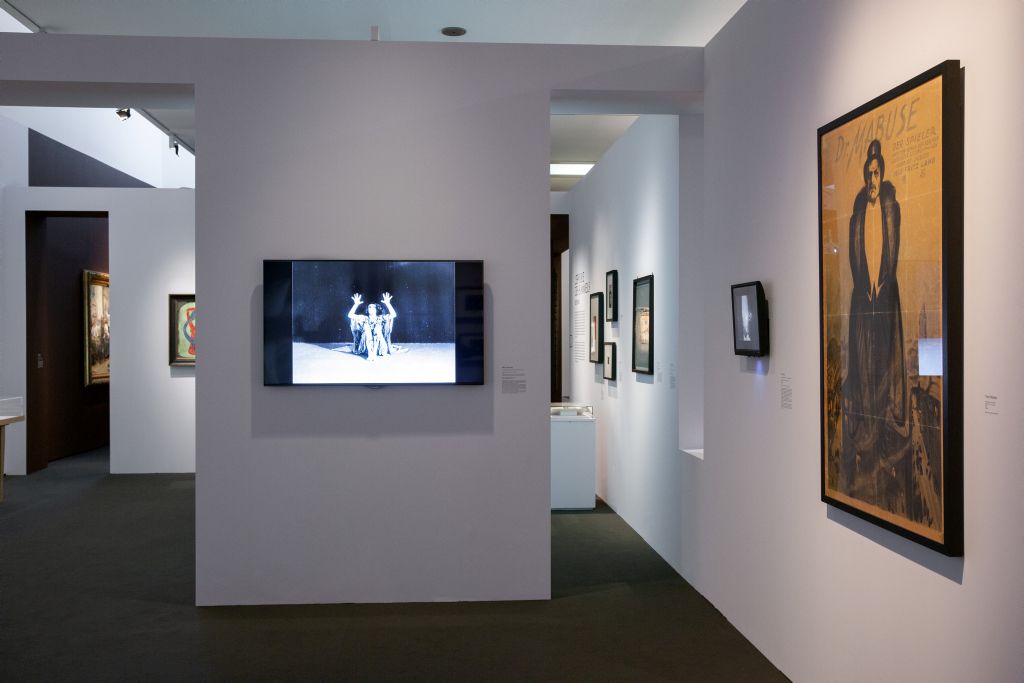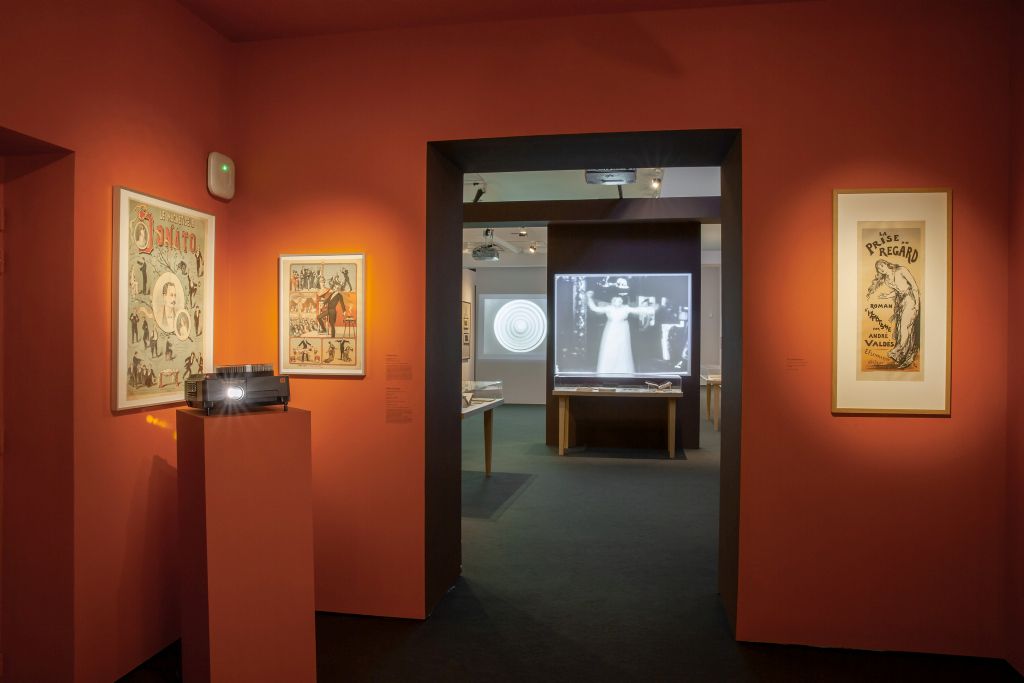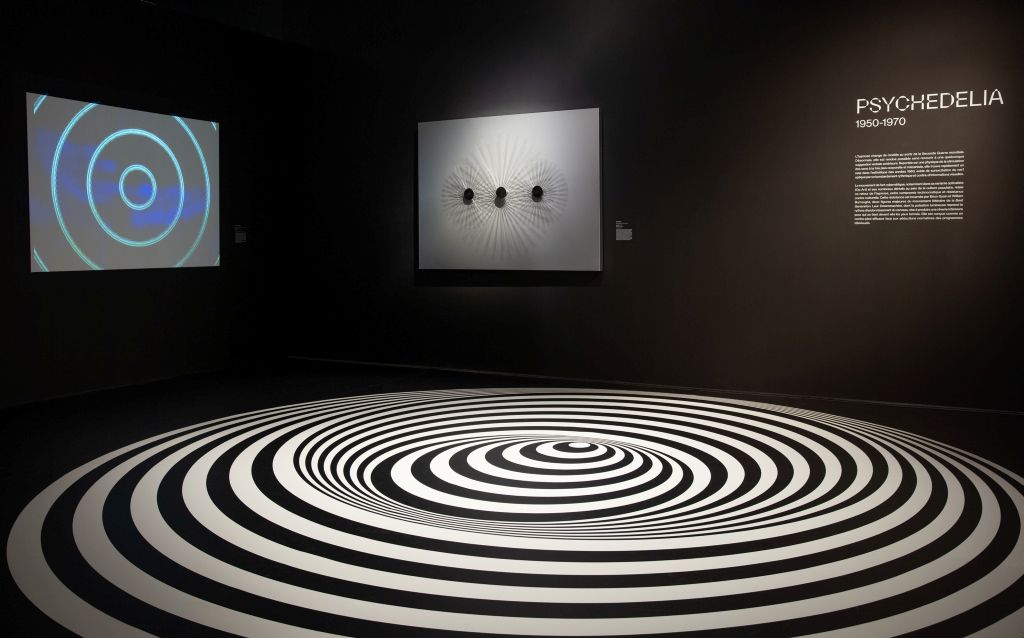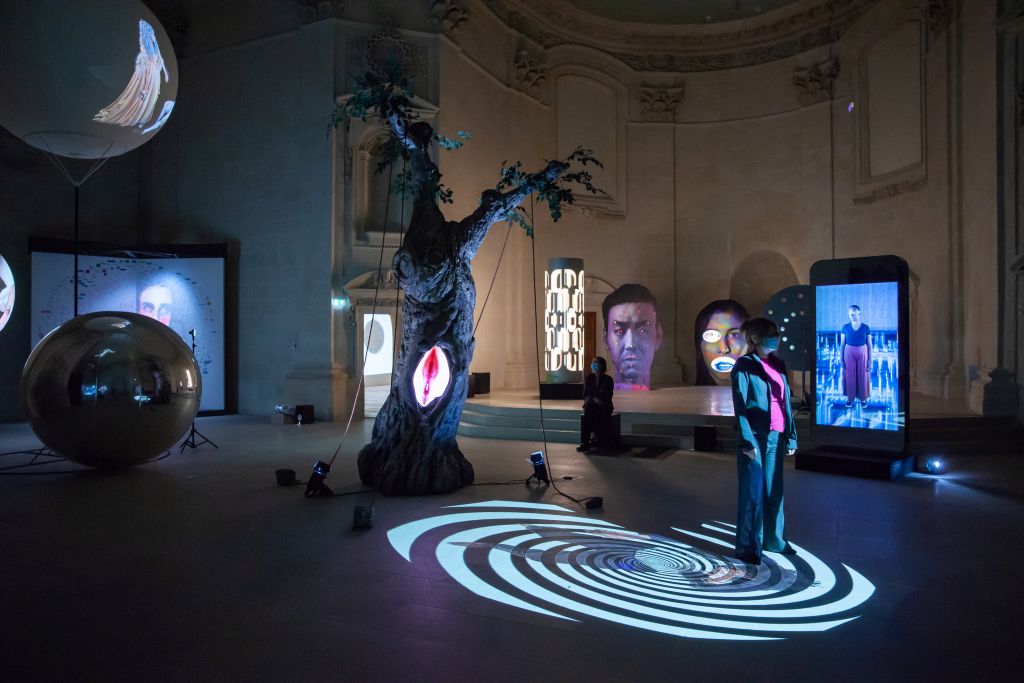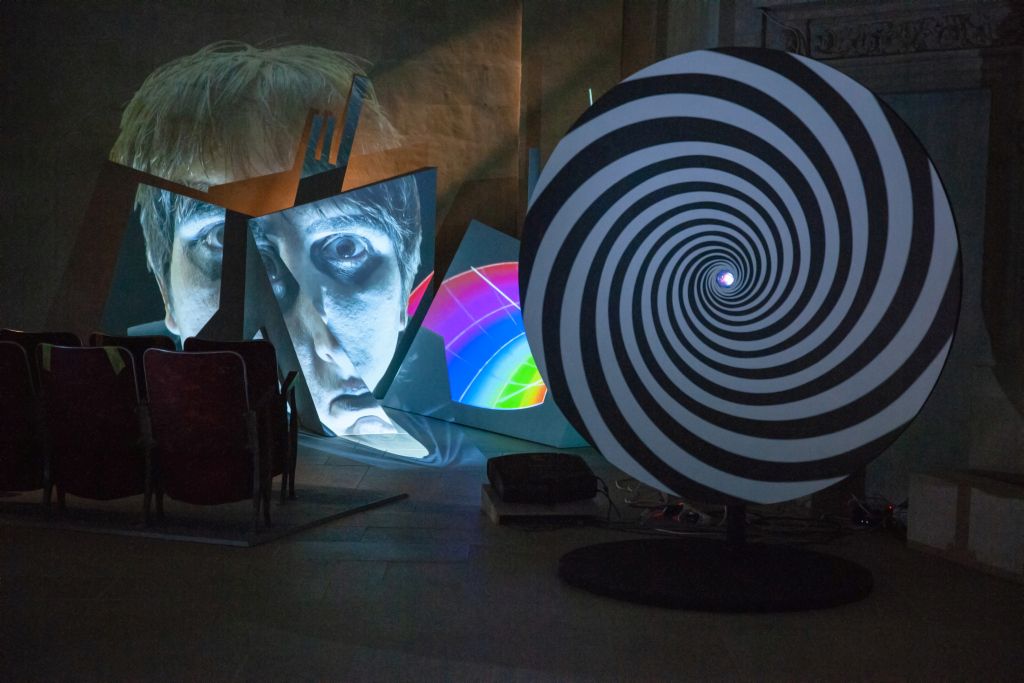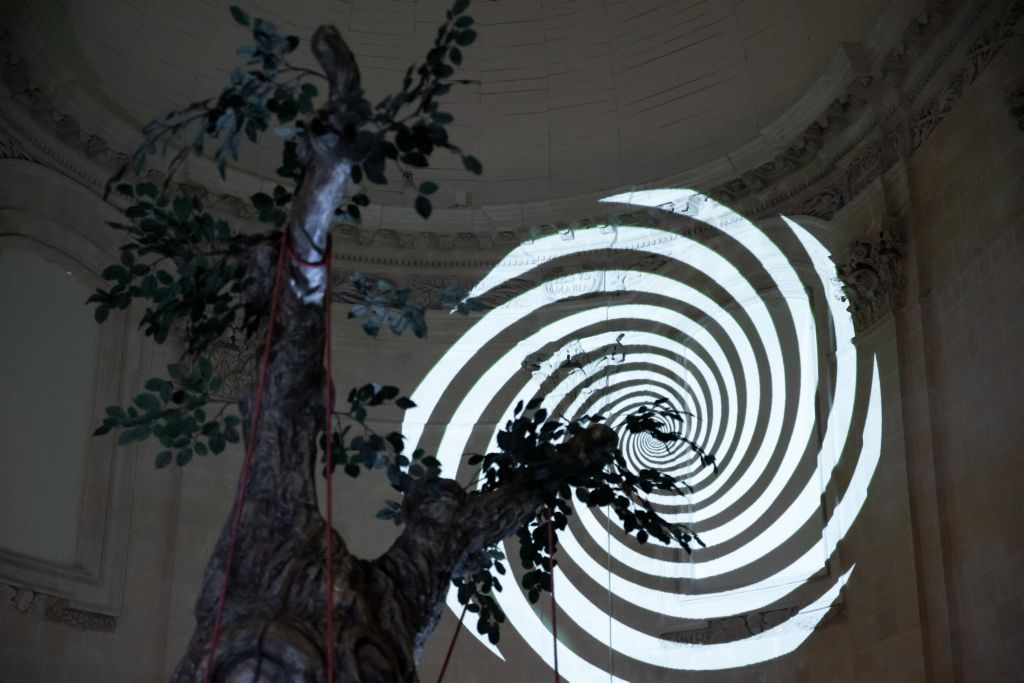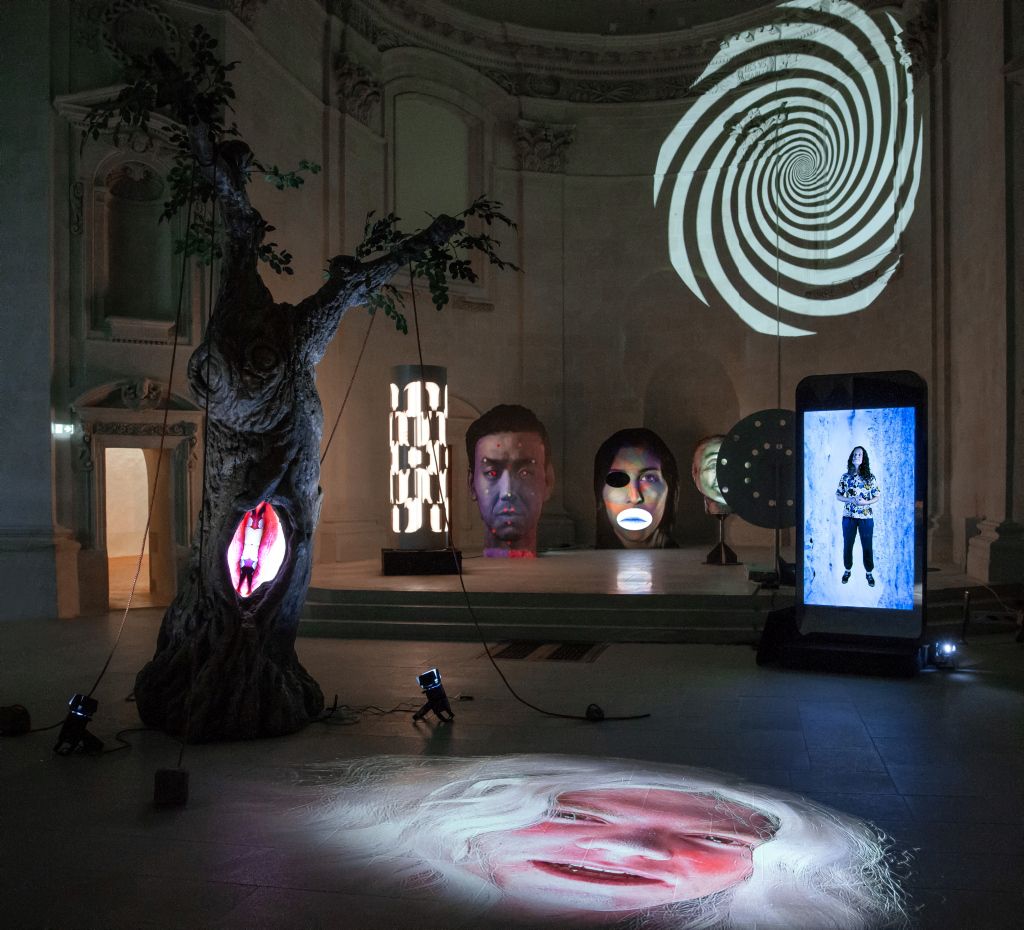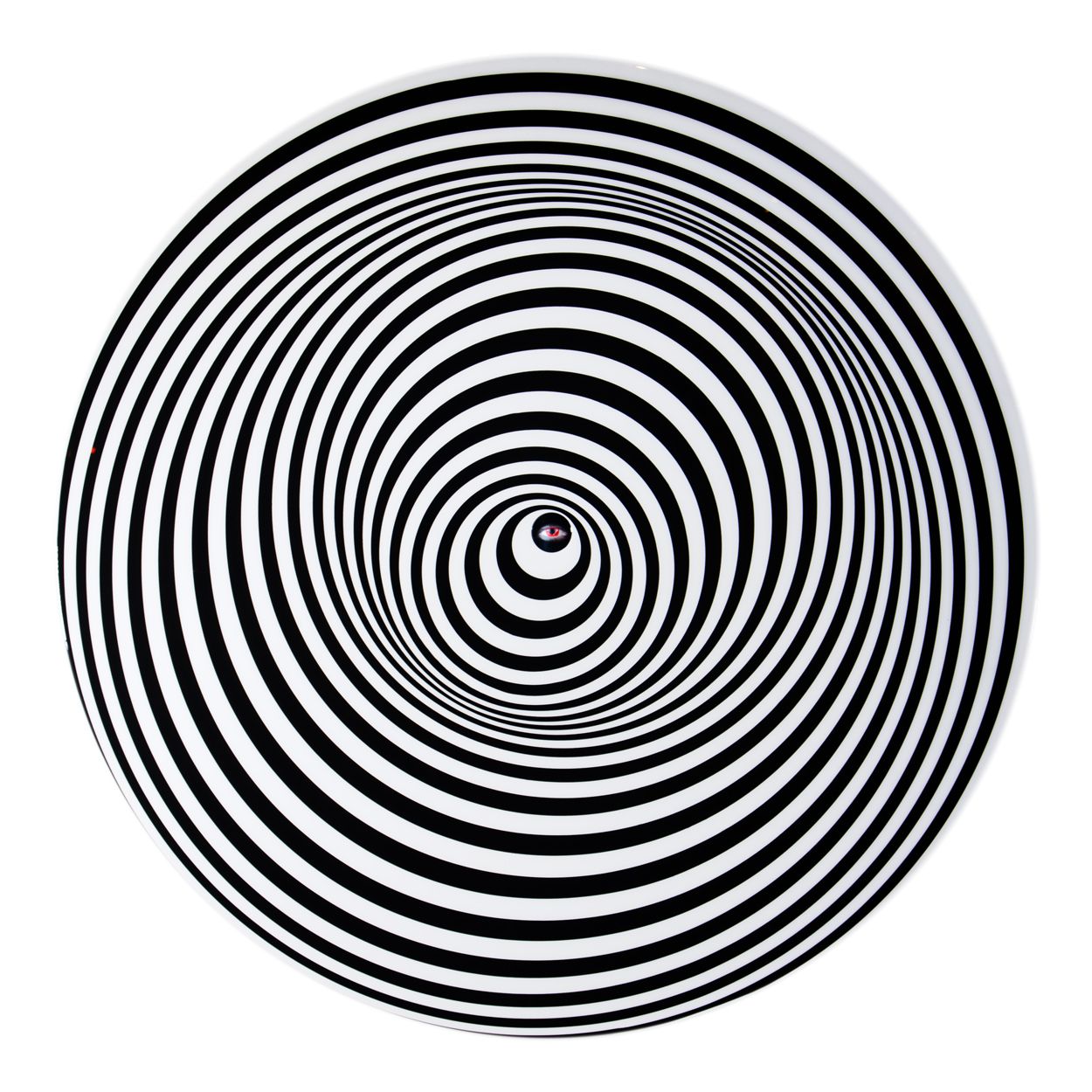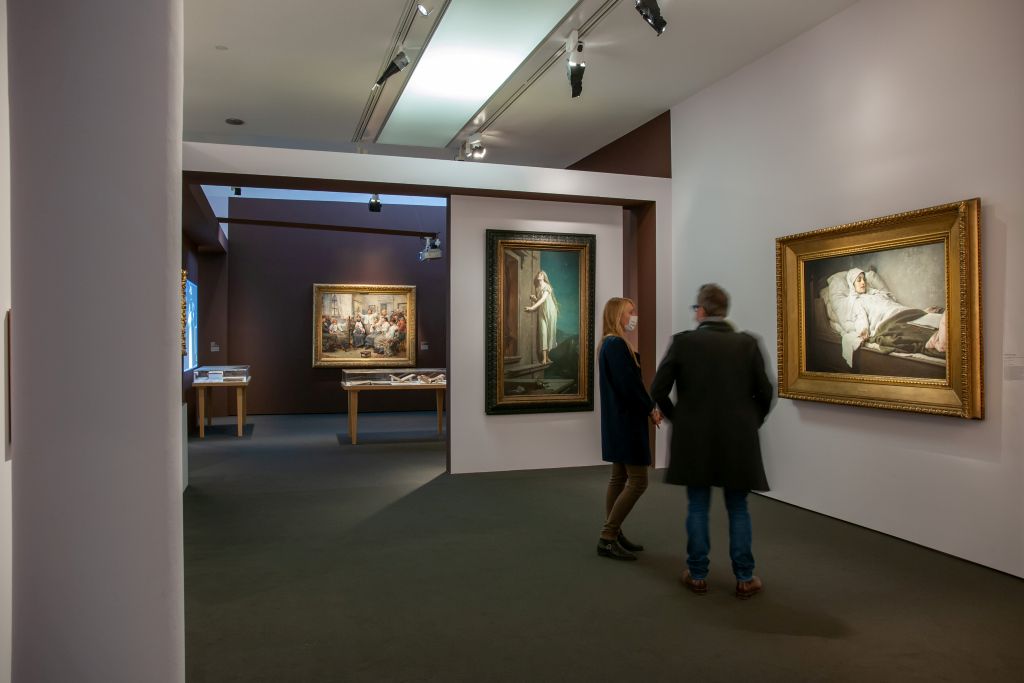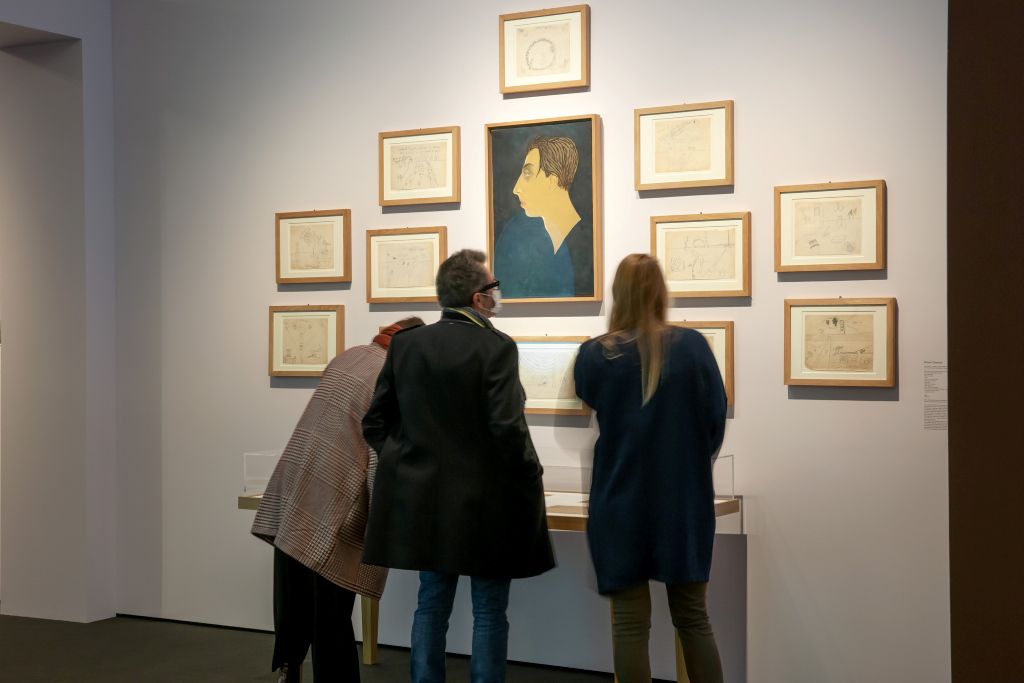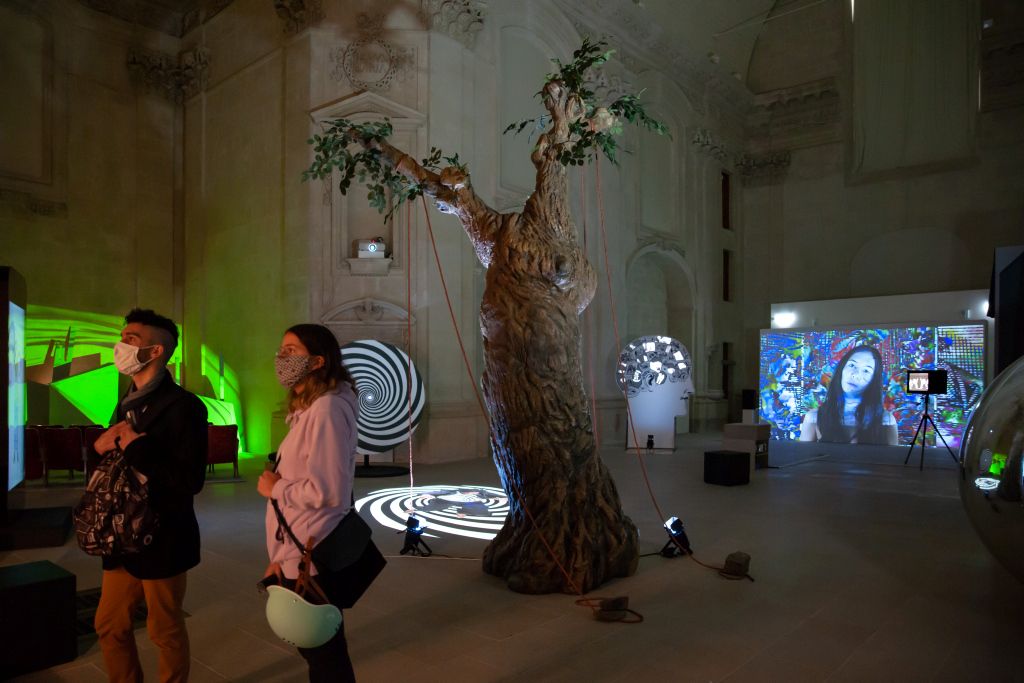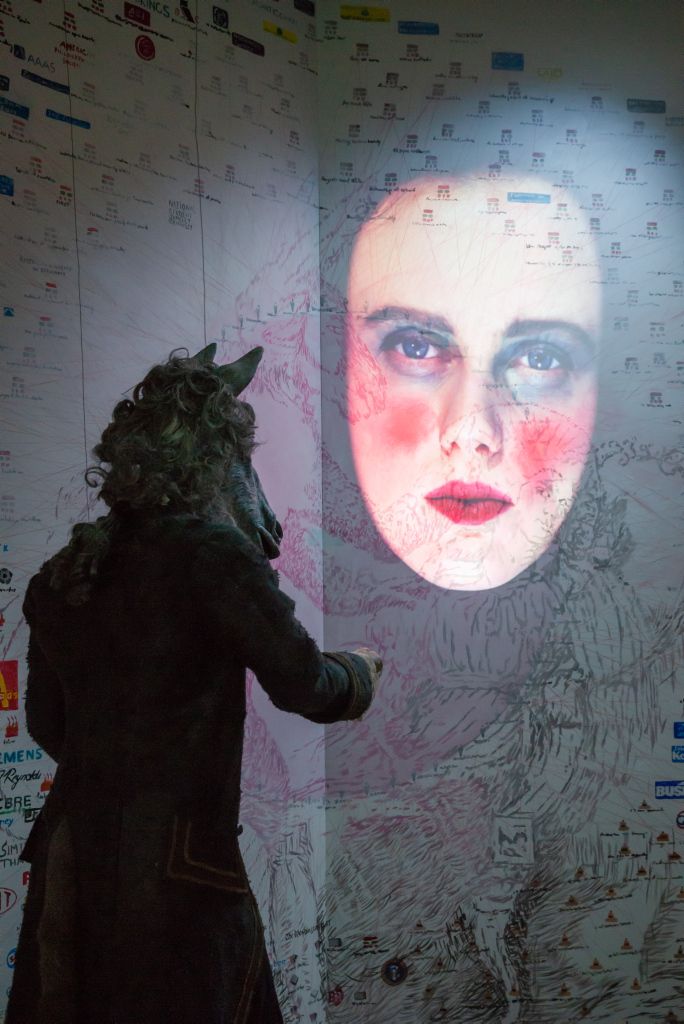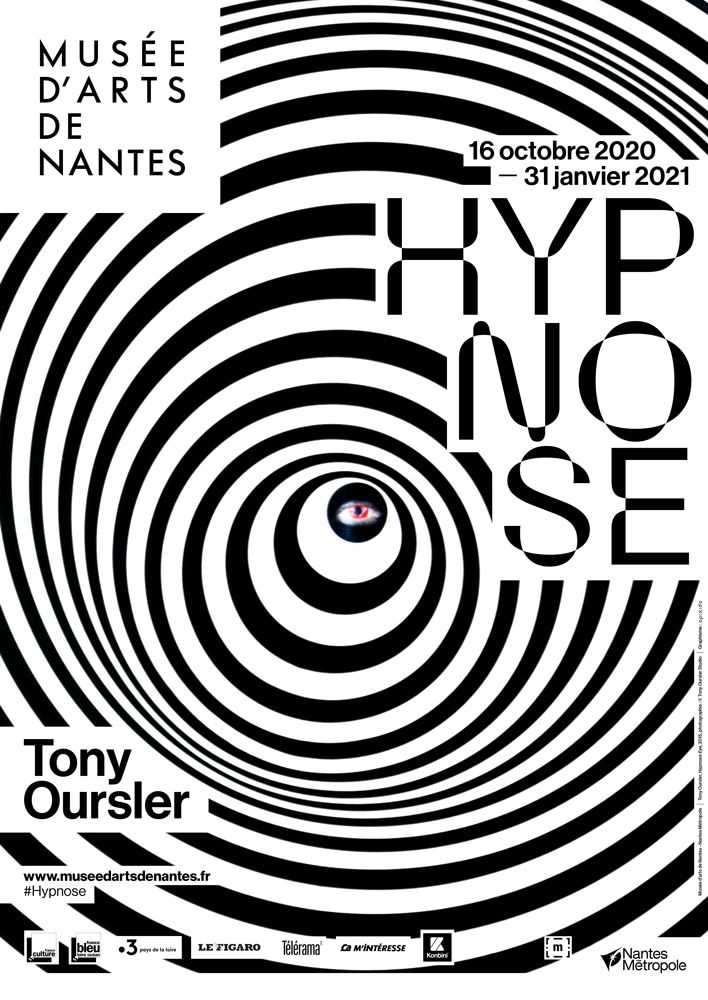-
L'exposition
L’hypnose endort, l’hypnose fait peur, l’hypnose amuse. L’hypnose n’est pas souvent convoquée dans les musées, probablement pour ces trois raisons réunies. Pourtant, l’hypnose est omniprésente, de manière délibérée ou inconsciente, dans le champ de la création. De Gustave Courbet à Auguste Rodin, en passant par Salvador Dalí ou encore Fritz Lang.
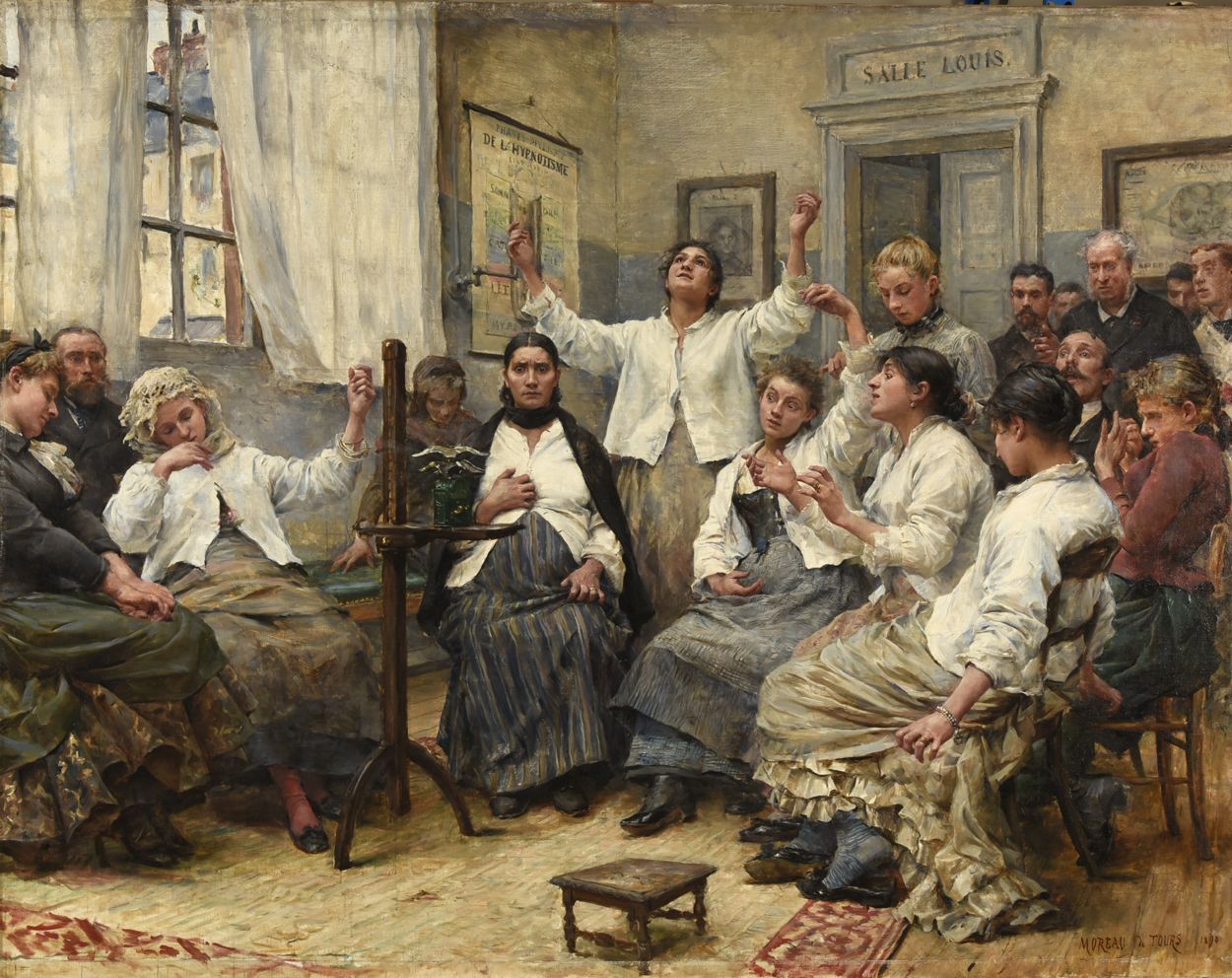
Georges Moreau de Tours, Les Fascinés de la Charité, 1890. Reims, Musée des Beaux-Arts © Reims, Musée des Beaux-Arts 2021 – photo Christian Devleeschauwer L’hypnose connaît aujourd’hui un net regain d’intérêt dans la culture scientifique et les imaginaires populaires. Mais peu de cas est fait du rôle qu’elle a pu jouer dans l’art. L’exposition Hypnose explore, pour la toute première fois, une histoire culturelle de l’hypnotisme de Mesmer à nos jours, et les liens étroits que les pratiques artistiques ont entretenus avec l’hypnose.
Située au carrefour de l’histoire de l’art, de l’histoire des sciences et de la culture populaire, Hypnose couvre tout le champ des arts visuels et vivants : de la peinture à la sculpture, du cinéma à la performance, explorant ainsi l’intérêt des plasticiens, musiciens ou danseurs pour les modes de transmission de l’émotion sous état modifié de conscience.
L’exposition se déroule en deux temps :
Le parcours historique et artistique, dans le Cube niveau -1
Suivant un parcours chronologique, s’ouvrant à la fin du 18e siècle pour conclure avec la création contemporaine, l’exposition revisite quatre siècles durant lesquels les théories et les pratiques de l’hypnose ont peu à peu été investies par les artistes.
Le parcours se divise en huit sections, chacune mettant en avant une grande diversité d’objets et supports (peintures, gravures, photographies, vidéos…), rythmée par des projections de films (Docteur Mabuse le joueur de Fritz Lang, Anemic Cinema de Marcel Duchamp…). Ainsi le visiteur peut découvrir le véritable Baquet de Franz Mesmer aux vertus thérapeutiques, tant adulé que critiqué, des représentations des expériences de la Salpêtrière, des créations de Gustave Courbet, Auguste Rodin ou encore Salvador Dali, William Wegman, Alain Séchas, Larry Miller…L’installation immersive de Tony Oursler, dans la Chapelle de l’Oratoire
Une installation multimédia de l’artiste américain Tony Oursler, spécialement conçue pour cette exposition, s’empare de la Chapelle de l’Oratoire. Des saynètes vidéo, proches de l’esprit du cinéma des premiers temps, animent un décor peuplé de multiples objets, sculptures et écrans. Tony Oursler y mêle de multiples références visuelles à l’histoire de l’hypnotisme et diverses angoisses contemporaines liées aux technologies numériques.
L’installation est constituée d’une douzaine d’œuvres où sculpture et art vidéo interagissent. On y retrouve par exemple Franz Mesmer et sa caricature, un âne hypnotisant une patiente, Magnetic Tree, un arbre de quatre mètre de haut qui fait référence à l’arbre que Puységur avait magnétisé et auquel des patients se reliaient par des ordes pour guérir, ou encore une pièce faisant référence à la beat generation et à la Dreammachine de Brion Gyson, produisant un phénomène visuel troublant provocant la détente, à la façon d’une séance d’hypnose.
Tony Oursler, en grand virtuose de l’installation immersive fantasmagorique, plonge le spectateur dans une expérience sensible et spectaculaire, questionnant l’attention du public, la distraction et l’emprise.
-
Tony Oursler
Pour cette exposition, l’artiste américain Tony Oursler investit la Chapelle de l’Oratoire avec une installation inédite conçue spécifiquement pour le lieu.
Par cette œuvre immersive, l’artiste propose un parcours où se mêlent des références visuelles à l’histoire de l’hypnotisme et à diverses angoisses contemporaines liées aux technologies numériques, du smartphone au big data.
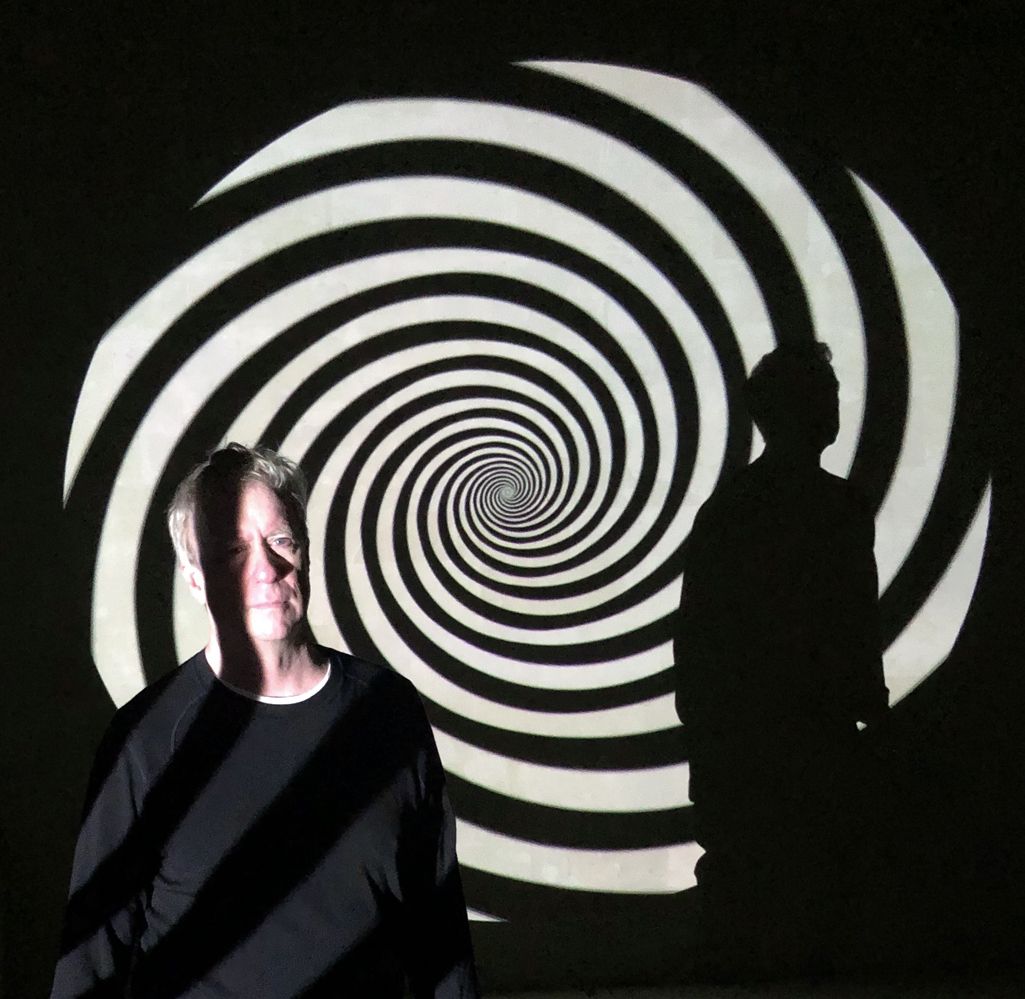
Né à New York en 1957, Tony Oursler est une figure majeure de la scène artistique américaine. C’est à Cal Arts (California Institute of Arts) qu’il réalise ses premières bandes vidéo et qu’il rencontre l’artiste Mike Kelley avec lequel il fonde en 1977 un groupe de punk-rock expérimental, The Poetics.
Au sein de l’art vidéo, Tony Oursler fait appel à une forme de théâtralisation qui hybride une grande variété de médiums : vidéo, film, photographie, peinture, sculptures mais aussi bandes musicales et sonores qui font l’objet d’un travail spécifique. Il a très tôt étendu la conception de l’écran à des supports inusités, à l’échelle de l’architecture et de l’espace public mais aussi, sur des mannequins de chiffons (les fameux dummies ou poupées qui apparaissent en 1992 et qui l’ont rendu célèbre sur la scène artistique internationale), dans des installations narratives et spectaculaires, constituées de décors à caractère burlesque et tragique à la fois.Ses œuvres figurent dans les plus grandes collections, comme celle du Centre Pompidou. Son travail a récemment été présenté au MoMA de New York, donnant lieu à l’édition d’un catalogue de sa collection personnelle de documents historiques liés à la culture populaire du divertissement, de l’occultisme et des spectacles de magie.

-
En vidéo
-
Visite virtuelle
Du parcours scientifique et historique jusqu’à l’installation immersive de Tony Oursler, plongez dans l’ambiance et les œuvres de l’exposition, la souris à la main, et découvrez des vidéos, textes, visites en langue des signes… Pour une immersion (presque) comme si vous y étiez !
Tony Oursler dans la Chapelle de l’Oratoire
Plongez dans l’ambiance de l’installation immersive de l’artiste américain Tony Oursler, imaginée pour l’exposition Hypnose dans la Chapelle de l’Oratoire.
-
Ateliers artistiques
Des ateliers artistiques pour petits et grands autour de l’exposition Hypnose, à réaliser à la maison.
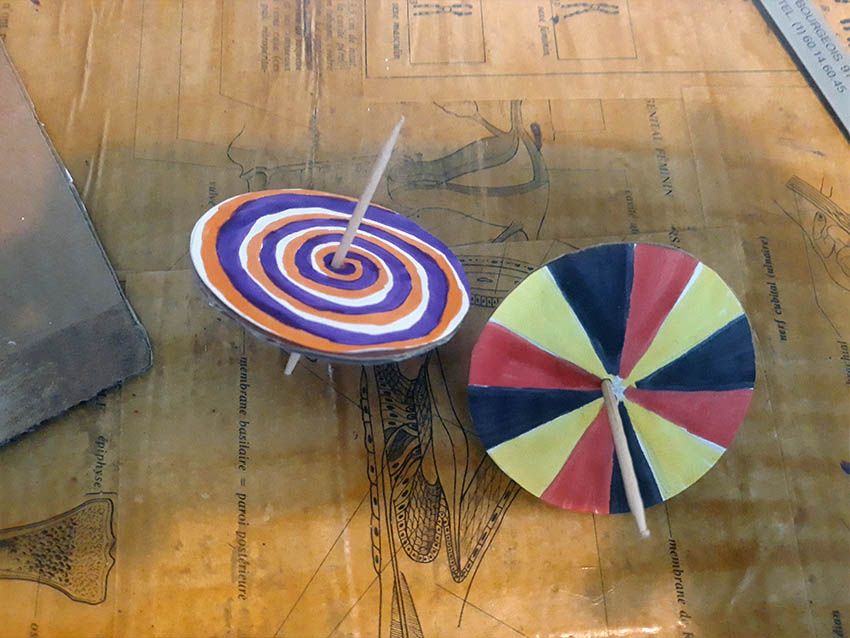
Atelier Tournicoti
Ou comment créer une toupie à illusion d’optique.
En 2006, Alain Séchas crée Hommage à Émile Coué, une installation déployant une spirale associée à une bande sonore. Au fur et à mesure que le mouvement s’accélère, la spirale tourne, le bourdonnement sonore prend sens, révélant la célèbre théorie d’Émile Coué : « Tous les jours, à tous points de vue, je vais de mieux en mieux ». Le dispositif mural, à voir dans l’exposition Hypnose, est totalement hypnotisant.
Inspirez vous de l’œuvre de Séchas et créez une toupie qui vous donnera le tournis !

Atelier Thaumatrope
Ou la magie d’une image animée.
L’exposition Hypnose présente des oeuvres de l’art optique qui déstabilisent le spectateur par des effets visuels captivants. De la même manière, le thaumatrope – disque ayant un dessin différent sur chaque face – est un jeu optique. En le faisant tourner rapidement, les deux dessins se fondent en un seul, créant une illusion de mouvement et une image animée.
Imaginez et créez un thaumatrope magique !
-
Catalogues et ouvrages autour de l'expo

Couverture du catalogue de l’exposition Hypnose présentée du 16 octobre 2020 au 22 août 2021. © Musée d’arts de Nantes, photo. : C. Clos Ce catalogue est publié à l’occasion de l’exposition Hypnose présentée au Musée d’arts de Nantes, dans le -1 du Cube et la Chapelle de l’Oratoire, du 16 octobre 2020 au 22 août 2021.
Disponible sur consultation à la bibliothèque du musée, et en vente à la librairie-boutique du musée.
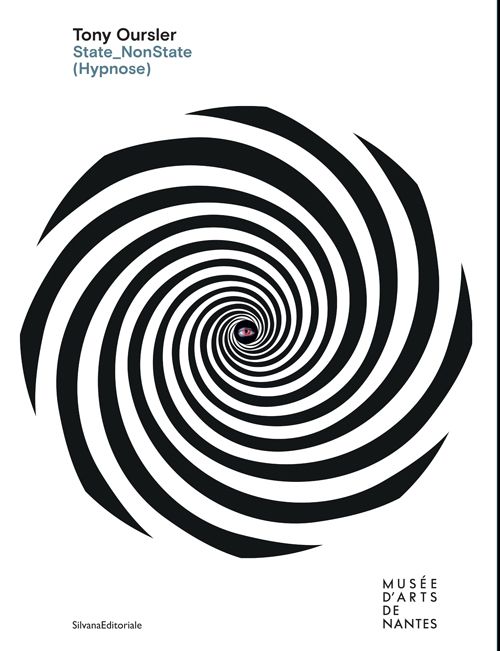
Couverture du catalogue de l’exposition Tony Oursler présentée du 16 octobre 2020 au 22 août 2021. © Musée d’arts de Nantes, photo. : C. Clos Ce catalogue est publié à l’occasion de l’installation immersive de Tony Oursler, présentée dans la Chapelle de l’Oratoire dans le cadre de l’exposition Hypnose, du 16 octobre 2020 au 12 septembre 2021.
Disponible sur consultation à la bibliothèque du musée, et en vente à la librairie-boutique du musée.
Ouvrages sélectionnés par la bibliothèque du musée
La bibliothèque du musée a préparé une sélection d’ouvrages autour de l’exposition Hypnose. Vous pouvez venir les consulter à la bibliothèque sur rendez-vous.
Commissariat général :
Sophie Lévy, directrice conservatrice du Musée d’arts de Nantes.
Commissariat scientifique :
Pascal Rousseau, professeur à l’Université de Paris I Panthéon-Sorbonne et à l’École des Beaux-Arts de Paris, assisté de Louise Denis, historienne de l’art, et Jean-Rémi Touzet, conservateur en charge des collections 19e au Musée d’arts de Nantes.
Le musée remercie L’État – ministère de la Culture – DRAC des Pays de la Loire pour la subvention dont bénéficie l’exposition.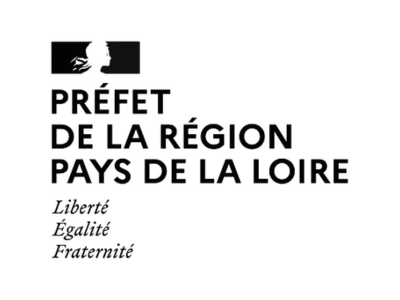
Le Musée d’arts de Nantes remercie ses partenaires médias.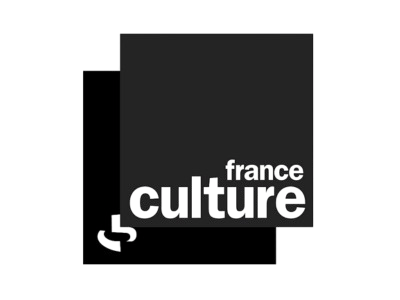
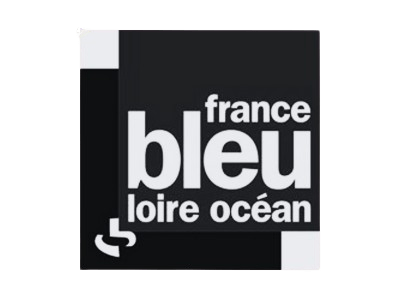
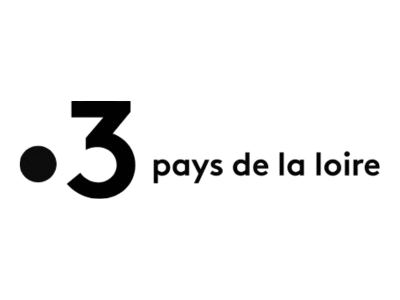

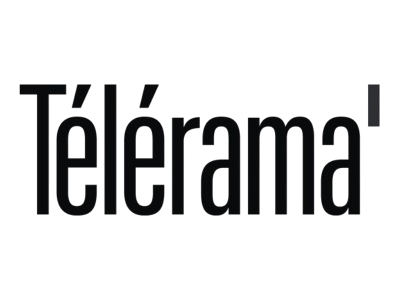
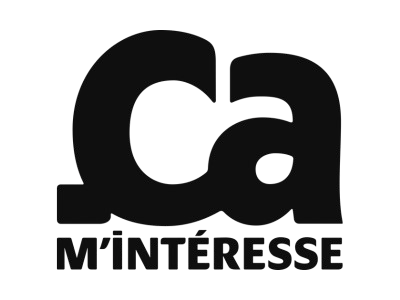

Légende et crédits
Tony Oursler, Hypnosis Eye, 2015, aluminum, acrylique et écran LCD, diamètre 119,4 cm, photo : © Tony Oursler Studio


